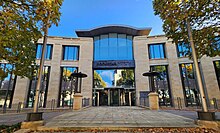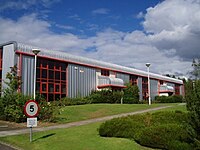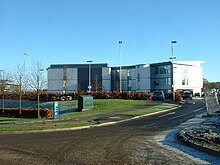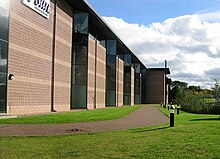Silicon Glen
Silicon Glen had its origins in the electronics business with Ferranti establishing a plant in Edinburgh in 1943, relocating facilities from Manchester during the Second World War.
Major US companies followed in the late 1940s, including Honeywell and NCR Corporation, the latter setting up cash register and adding machine manufacturing in Dundee.
The government development agencies saw electronics manufacturing as being a positive replacement for people made redundant through heavy industry closures and the associated training and reskilling was relatively easy to achieve.
Other companies who developed semiconductor wafer fabrication or other manufacturing plants included SGS in Falkirk, NEC, Burr-Brown Corporation, IPS (then Seagate Technology) and Kymata (now Kaiam) in Livingston, CST in Glasgow and Micronas in Glenrothes.
[3] The potential and implications of a single European market motivated foreign companies, particularly those from the United States, to establish operations in Silicon Glen.
[4] Rodime of Glenrothes pioneered the 3.5 inch hard disk drive in 1983 and spent subsequent years defending its patents against (and collecting royalties from) Seagate, Quantum, IBM and others.
The manufacturing sector grew to such an extent that at its peak it produced approximately 30% of Europe's PCs, 80% of its workstations, 65% of its ATMs and a significant percentage of its integrated circuits.
Viasystems, National Semiconductor (now Texas Instruments), Motorola and Chunghwa Picture Tubes all laid off substantial numbers of employees or closed factories completely.
There is also a dynamic and fast growing electronics design and development industry, based around links between the very strong universities and indigenous companies and projects like the Alba Campus.



